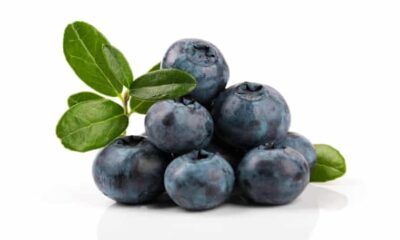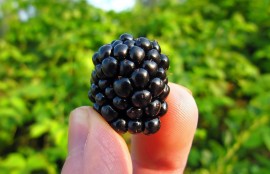
Whilst researching my latest book, Food for Life, I learnt that we’re very short of practical advice on food choices which are the most important things we can do for our health (humans and our gut microbes) and also to help the planet. I also learnt that how we eat can be as important as what we eat. Here are my top five, practical everyday tips to help you make small but sustainable changes across the year that will be far better for you than a few weeks of crash dieting or restrictive eating.
Start your meal with fibre and a simple vinegar and extra virgin olive oil dressing
 One of the simplest ways we can help our bodies thrive and prevent over-eating is to change the order in which we eat our food. Reaching for the bread basket or bowl of crisps at the start of a meal results in a rapid increase in blood glucose levels and a subsequent insulin response. This will likely leave you feeling tired, hungry and irritable just a few hours later. This is because glucose is rapidly absorbed from starchy foods, and this is even quicker on an empty stomach.
One of the simplest ways we can help our bodies thrive and prevent over-eating is to change the order in which we eat our food. Reaching for the bread basket or bowl of crisps at the start of a meal results in a rapid increase in blood glucose levels and a subsequent insulin response. This will likely leave you feeling tired, hungry and irritable just a few hours later. This is because glucose is rapidly absorbed from starchy foods, and this is even quicker on an empty stomach.
Why not start with a grilled vegetable platter, a selection of crunchy veggies or zesty fresh chopped herbs with a simple extra virgin olive oil and vinegar or lemon dressing. The extra acidity can reduce overeating on your next course, by reducing hunger signals and may also reduce harmful blood sugar spikes.
Choose high-quality, non-meat protein
This can be grains, legumes, fungi or sustainable seafood sources. The importance of good quality protein in our diet is well known but what is less understood is that the classic combination of “meat and two veg” is not the only way to ensure we get the protein we need. Smoked tofu is surprisingly tasty and can be added to salads and stir fries for added protein.
I realised that not all fish is that healthy for us or the planet, but shellfish, such as clams and mussels, are an untapped source of sustainable, nutrient-rich seafood protein. These small and delicious foods are packed with protein, zinc, iron and B vitamins, as well as choline and iodine, making them a great addition to our diet.
Another unsung hero group in our diet is mushrooms. Mushrooms can replace meat in many dishes, bringing umami flavour, nutrients, protein and even vit D, if left on a sunny shelf, with a satiating and satisfying texture plus a positive impact on the environment.
Choose your drinks wisely
Many of us find plain water a bit boring and Brits are world famous for their love of builder’s tea: the mix of black tea, milk and sugar can contribute quite significantly to our energy intake, especially when it’s the gateway to a biscuit or two.
Try some of these delicious swaps, to make your next drink choice healthier by choosing something polyphenol-rich, probiotic or both.
If you like hot drinks, simply opting for black coffee over your builder’s brew will make a big difference. Coffee is rich in polyphenols and contains fibre and won’t contribute to excess energy intake if you drink it black or with a drop of unsweetened plant or whole cow’s milk. Green tea, especially matcha powder, has a host of well-known benefits thanks to specific polyphenols, including green tea catechins and fibre.
For cold drinks, avoid fruit juices and soft drinks. Opt instead for unsweetened live kombucha, which has a natural fizz and flavour with the added benefit of probiotic strains and no added sugar as it is fermented by the microbes.
For a hearty, filling alternative to shop-bought milkshakes and smoothies, natural kefir (made yourself or shop-bought) is a delicious and healthier alternative for adults and children alike. Add some almonds for crunch or chopped fruit for different flavours.
Add colour to your plate
 The colours in our plants are there thanks to chemicals called polyphenols, also known as phytonutrients. These chemicals are produced by plants to protect themselves against environmental stressors, including drought, cold weather, hot weather, insects and parasites. A great example of this is the dark red colour of the oranges which grow in the foothills of Mount Etna in Sicily, where the nights are very cold and the days are very hot and dry.
The colours in our plants are there thanks to chemicals called polyphenols, also known as phytonutrients. These chemicals are produced by plants to protect themselves against environmental stressors, including drought, cold weather, hot weather, insects and parasites. A great example of this is the dark red colour of the oranges which grow in the foothills of Mount Etna in Sicily, where the nights are very cold and the days are very hot and dry.
It turns out these protective chemicals are also helpful for humans. This is why you should aim to eat lots of different colourful plants, choosing variety over the same familiar favourites, like iceberg lettuce and apple.
Different polyphenols are beneficial for different things. Beetroot is well proven to improve blood pressure and post-exercise recovery. Black beans are a staple in some of the longest-living humans and are the beans richest in polyphenols. A great way of introducing polyphenols is also to opt for colourful versions of your favourites, such as sweet potato and purple potato, purple carrots and purple sprouting broccoli, too.
Make simple tweaks to your daily staples like bread and yogurt
Pick bread with high levels of fibre, seeds and no added sugar. Many supermarket breads have lots of added ingredients to make them last longer on the shelf and increase their palatability. True sourdough bread only needs a simple base of flour, with the sourdough starter, water and salt, which can be found in supermarkets (thanks to brands like Bertinet bakery) or can be made at a local bakery or at home. Choose to eat breads with whole grains, seeds and different types of flour, like dark rye, and always look for a high fibre content, rather than a healthy-looking label.
 Before doing the ZOE programme, I thought my breakfast of muesli with skimmed milk was exactly what I needed for the day ahead. I soon learned that this breakfast, washed down with a glass of orange juice, pushed my blood sugar to diabetic levels and I quickly changed the menu. Adding mixed nuts and seeds to plain natural yoghurt with some polyphenol-rich berries is a great way to enjoy a nutritious breakfast that won’t spike your blood sugar.
Before doing the ZOE programme, I thought my breakfast of muesli with skimmed milk was exactly what I needed for the day ahead. I soon learned that this breakfast, washed down with a glass of orange juice, pushed my blood sugar to diabetic levels and I quickly changed the menu. Adding mixed nuts and seeds to plain natural yoghurt with some polyphenol-rich berries is a great way to enjoy a nutritious breakfast that won’t spike your blood sugar.
Natural yoghurt is also a great way to introduce probiotics to your diet so, if you want to give your yoghurt an extra probiotic boost, simply add a splash of kefir. This is also great for those who don’t yet love the taste of kefir and want to find a way of including it in their diet. Kefir is also a great addition to soups and stews; just make sure you don’t actually cook the kefir as it will kill the live microbes.
Another easy way to include more fermented foods every day is to use miso paste, rather than stock cubes, to add flavour and umami to your dishes. Simply stir a teaspoon of miso into your pasta sauce or into your steamed greens or to add flavour to a fish recipe.
Finally, swapping white rice and white pasta with whole grains is an easy win. Replace white rice with pearled barley, choose buckwheat over couscous (which is just mini pasta balls), and enjoy spelt spaghetti instead of plain white spaghetti, keeping your favourite dishes but making them more nutritious with these simple tweaks.
Original article here






















Sorry, the comment form is closed at this time.